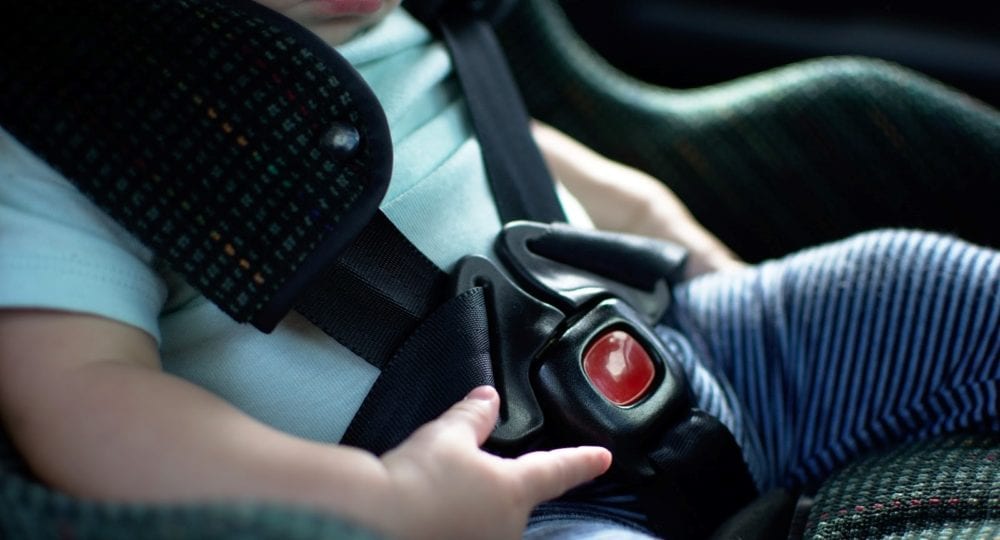September 15th – 21st has been designated as Child Passenger Safety Week by the National Highway Traffic Safety Administration (NHTSA). According to NHTSA, car crashes are the leading cause of death for children ages 1 through 13 and many times, injuries and deaths can be prevented by proper use of car seats/booster seats and seat belts.
To help prevent injuries, NHTSA is focusing on education on car seat/booster seat selection, direction, location, installation, and harnessing. Car seats have come a long way since the 1930’s when they first appeared as a way to keep kids from moving around in vehicles to now, where their primary focus is on child safety. For images on the evolution of car seats, click here. NHTSA has designated Saturday, September 21st as National Seat Check Saturday. More details can be obtained from the following site. Proper usage of child safety seats in cars reduces the risk of death of infants (under 1 year old) by 71%, by 54% for toddlers (1 to 4 years old), and by 45% for children ages 4-8.
Car Seat/Booster Seat Selection
- If purchasing a used car seat or booster seat, never use one that has been involved in a moderate/severe crash.
- Be sure that no labels are missing.
- Note that car seats do expire, typically lasting from 6 to 10 years – be sure that the car seat you are purchasing has not expired.
- Be sure that the car seat is appropriate for your child’s age, height, and weight. Click here for help determining the proper type of car seat for your child or review this infographic to help get you started.
- Register your car seat with the manufacturer so that you are notified of any recalls.
Direction
- Be sure that your car seat is facing the correct direction according to the child’s age, height, and weight.
- NHTSA suggests that children ride rear-facing as long as possible, using the upper limits of their seats.
- Children should also remain in harnessed car seats as opposed to booster seats for as long as possible according to the upper limits of their seats.
Location
- Know where your car’s airbags are located – a rear-facing car seat should never be placed in front of an active airbag.
- The middle seat is considered the best location for your child as it offers protection from side-impact, although depending on the needs of other passengers, this may not be possible.
- Children under 13 should be placed in the back seat as it offers better protection from head-on collisions.
Installation
- Be sure that the car seat/booster seat is installed correctly – refer to the car seat manual when installing. An estimated 46% of car seats have been installed incorrectly (NCRUSS, 2015).
- Car seats can be installed using lower anchors/tethers (‘u’ shaped anchors located in the vehicle), or via seat belts using the seat belt locking mechanisms. Both methods are equally safe if used correctly. Be sure to consult your car’s manual.
- To have your car seat installation verified, you can have a Certified Child Passenger Safety Technician check your car seat. Find a technician near you!
Harnessing
- Car seat harness straps should originate at or below the child’s shoulders if rear-facing. If the child is forward-facing, the harness straps should originate at or above the child’s shoulder.
- Be sure to tighten the webbing of the car seat harness after the child is in the car seat. Test to be sure it is secured properly by pinching the webbing at the shoulder – if you are able to pinch it, it is not tight enough.
When determining if your child is ready for the seat belt alone, do the Safety Belt Fit Test (all three must be passed to use a seat belt alone):
- Check the knees and feet. With the child sitting with their back and bottom against the seatback, knees should be bent at the edge of the seat and feet should touch the floor comfortably and stable.
- Check the lap belt. The lap belt must fit snugly across the hips or upper thighs.
- Check the shoulder belt. The shoulder belt must fit across the shoulder and chest, NOT across the face or neck.
Don’t be in a hurry to get them into a seat belt! Keep your child safe and progress with child safety seats based on national safety recommendations of age, weight, and height.
Resources:





